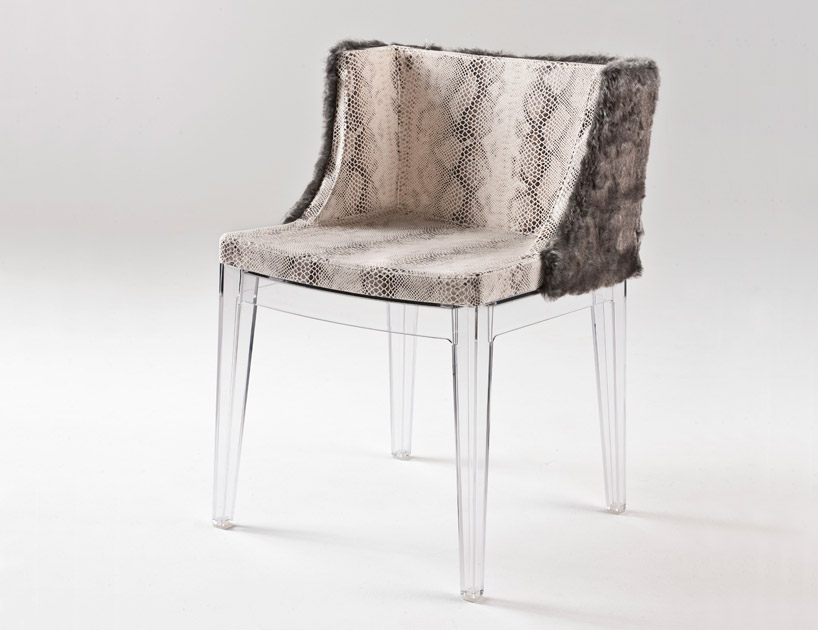In Milan, sober thoughts temper design impulses

The Milan Furniture Fair is usually an exuberant, often silly affair.
Half of the ideas presented in Milan's April fair, which continues through Sunday, never see production. That's OK -- we like experimentation and invention, especially for for such transitory objects as seating, light fixtures and fabrics. They don't have the same demands as "serious" building materials.

Not so this year. In spite of some wild zaniness -- such as Lenny Kravitz arriving with black-and-white tiles for Lea Ceramiche and a borrowed chair design for Kartell that riffs on Philippe Starck's "Mademoiselle" classic, but in leather, fur or python -- the mood is rather sober. Designers have been looking for ways to present ideas that evoke global conscientiousness through austerity, severity and sobriety.
This is not such a bad idea for furniture. You can see how U.S. architects and contract designers will find them helpful when presenting to a corporate or government client starved for project funding.
Materials first
Here's what one uptight furniture fair organizer, Marco Romanelli, said to Agence France Press: "Design needs to take into account a significant economic crisis, which has led to a reinterpretation to make products more functional while avoiding provocations." And how does this happen? "The attention is increasingly on the materials," he explained.
That means there were few examples of python-clad seating other than from Kravitz.
More zeitgeist is Dedon'sDala collection by Stephen Burks. The outdoor furnishings are made from recycled trash and a polyethylene that the company says is easy to break down and reuse.
At the other end of consumer spectrum, Ikea previewed its seventh PS collection, which resuscitates a 1950s table lamp design with LED light sources and an iconic 1970s metal-tube sofa using reclaimed springs from mattress manufacturers.
Like Ikea's side tables and tableware, many new products designs are made with bamboo, wood-plastic composites and recycled plastics. Wicker, another fast-renewing resource, was on display in Dedon's new introduction of a woven, hanging lounge designed by Daniel Puzet and Fred Frety.
Luxury, with a conscience
Even the luxury segment has a conscience this year. Mercedes-Benz, a global luxury brand, presented stripped-down chairs and sofas with Formitalia in constrained palettes of aluminum, glass and wood. French architect Jean Nouvel's Mia chair for Emu, in tubular aluminum, is a durable and economic design, in spite of its high-design pedigree.
The use of 3-D printing and other high-tech methods for creating furniture attracted attention from some observers, but there couldn't be a more wasteful manner for producing (poorly, one must add) a chair to sit on. Instead, I'll take a reintroduced classic, such as Vitra's sofas in simple metals and woods, or a Solvay stool.
If Milan can have a serious side, that's the one architects are most likely to sit on.
This post was originally published on Smartplanet.com